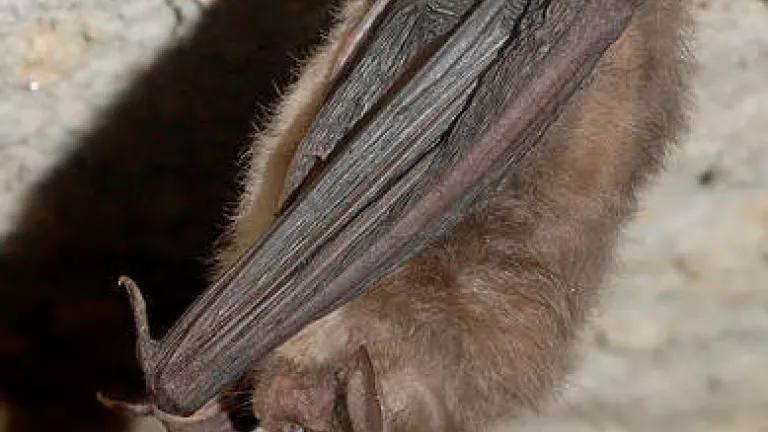
Last time I wrote, I mentioned a couple of events that NRDC was organizing with Bat Conservation International to raise the issue of white-nose syndrome and the corresponding die-off of millions of bats in the national eye – specifically by coordinating a group of allies to develop an effective strategy for securing additional federal funding for bats and white-nose syndrome and by holding a congressional briefing on the issue at the Capitol.
I’m happy to report that both events were hugely successful and we have a coordinated team of wildlife and caving experts who are prepared with a detailed strategy for increasing federal funding to wildlife management agencies as well as primary researchers to investigate the cause of white-nose syndrome and what can be done to slow or stop its spread across the country. Additionally, the briefing on Capitol Hill was so well attended by congressional office staff that the event was standing room only.
We brought in three amazing experts. Nina Fascione, the executive director for Bat Conservation International talked about how cool bats are and how important they are to our ecosystems. Dr. Winifred Frick, who recently published a study in Science on the predicted regional extinction of the little brown bat, spoke about the current scientific knowledge about white-nose syndrome as well as the knowledge gaps where research funding is urgently needed. Finally, James Roby, who is the president of the Connecticut chapter of the Northeastern Organic Farming Association, spoke about his concerns that white-nose syndrome will threaten current organic farming practices and lead to an increased use of pesticides by farmers attempting to combat insect populations that are no longer regulated by the declining bat populations.
James, who himself runs an organic farm, also happens to be an avid caver and spoke passionately about all the caves that he’s been in throughout the northeast – particularly as part of leadership building expeditions with youth groups. Many of those caves are now closed or limited to the public and caving has changed dramatically with fears that people could inadvertently spread white-nose syndrome on their clothing or equipment from cave to cave. While the caving community is responsibly practicing decontamination protocols and is organized and united behind the fight to help solve white-nose syndrome, it was devastating to think of the lost opportunities of connecting the next generation to the fascinating underground world of bats and caving.
Which makes reporting on the subject particularly important right now. One reporter who attended our briefing, Brandon Keim of Wired Magazine, has made white-nose syndrome and its effect on caving one of his priority issues. You can read one of his latest entries where he interviews Cheryl Jones, who attended our strategy meeting, on Wired’s website. Additionally, Brandon has teamed up with Spot.us to do a citizen funded feature on white-nose syndrome – only the funding is “free” which means that if you’d like to see more awesome reporting on white-nose syndrome by Brandon you can log on to Spot.us here by clicking on "free credits" and simply answering a brief questionnaire. You will then be given money to put towards future reporting on the topic. I did it and it was simple – you have to create an account, but other than that it’s painless. So please join us and all the others who have been standing up for bats, by contributing to Brandon’s adventures as he works to inspire current and future generations to care about white-nose syndrome and the effects it is having on the mysterious underworld of bats.
